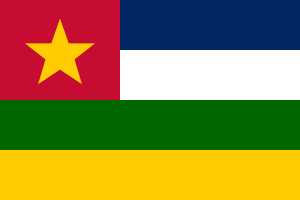Difference between revisions of "Language/Pulaar/Grammar/How-to-Use-Be"
m (Quick edit) |
m (Quick edit) |
||
| Line 88: | Line 88: | ||
|description=In this lesson, we will learn how to use the verb "be" in Pulaar. This is an intermediate level lesson, so if you are a beginner, you may want to review some of the basics first. | |description=In this lesson, we will learn how to use the verb "be" in Pulaar. This is an intermediate level lesson, so if you are a beginner, you may want to review some of the basics first. | ||
}} | }} | ||
==Related Lessons== | |||
* [[Language/Pulaar/Grammar/How-to-Use-Have|How to Use Have]] | |||
* [[Language/Pulaar/Grammar/Pronouns|Pronouns]] | |||
* [[Language/Pulaar/Grammar/Conditional-Mood|Conditional Mood]] | |||
* [[Language/Pulaar/Grammar/Gender|Gender]] | |||
* [[Language/Pulaar/Grammar/Future-Tense|Future Tense]] | |||
* [[Language/Pulaar/Grammar/Negation|Negation]] | |||
* [[Language/Pulaar/Grammar/Questions|Questions]] | |||
* [[Language/Pulaar/Grammar/Give-your-Opinion|Give your Opinion]] | |||
* [[Language/Pulaar/Grammar/Plurals|Plurals]] | |||
{{Pulaar-Page-Bottom}} | {{Pulaar-Page-Bottom}} | ||
Revision as of 00:33, 2 March 2023
Hi Pulaar learners! 😊
In this lesson, we will learn how to use the verb "be" in Pulaar. This is an intermediate level lesson, so if you are a beginner, you may want to review some of the basics first.
Introduction
The verb "be" is one of the most important verbs in any language. In Pulaar, it is used to express existence, identity, and location. It is also used to form the passive voice. In this lesson, we will look at how to use the verb "be" in all of these contexts.
Forms of "Be"
The verb "be" has two forms in Pulaar: "ɗen" and "ɗon". The form "ɗen" is used for singular subjects, while the form "ɗon" is used for plural subjects. Here are some examples:
| Pulaar | Pronunciation | English Translation |
|---|---|---|
| ɗen | /ðen/ | I am |
| ɗon | /ðon/ | We are |
Expressing Existence
The verb "be" can be used to express existence. To do this, the verb is followed by the word "ɗooɓe", which means "here". Here are some examples:
| Pulaar | Pronunciation | English Translation |
|---|---|---|
| ɗen ɗooɓe | /ðen ˈðoːbe/ | I am here |
| ɗon ɗooɓe | /ðon ˈðoːbe/ | We are here |
Expressing Identity
The verb "be" can also be used to express identity. To do this, the verb is followed by a noun or pronoun. Here are some examples:
| Pulaar | Pronunciation | English Translation |
|---|---|---|
| ɗen ndee | /ðen ˈndeː/ | I am a teacher |
| ɗon mawɗo | /ðon ˈmaːwo/ | We are students |
Expressing Location
The verb "be" can also be used to express location. To do this, the verb is followed by a preposition and a noun or pronoun. Here are some examples:
| Pulaar | Pronunciation | English Translation |
|---|---|---|
| ɗen e nder galle | /ðen e ˈnder ˈgale/ | I am in the house |
| ɗon e nder kafee | /ðon e ˈnder ˈkafeː/ | We are in the cafe |
Passive Voice
The verb "be" can also be used to form the passive voice. To do this, the verb is followed by the past participle of the verb. Here are some examples:
| Pulaar | Pronunciation | English Translation |
|---|---|---|
| ɗen wonnde | /ðen ˈwondne/ | I am seen |
| ɗon wonnde | /ðon ˈwondne/ | We are seen |
Dialogue
Here is a dialogue using the verb "be":
- Person 1: Ndee ɗen ɗooɓe? (What am I here?)
- Person 2: Ndee ɗen ndee. (You are a teacher.)
Conclusion
In this lesson, we have learned how to use the verb "be" in Pulaar. We have seen how it is used to express existence, identity, location, and the passive voice. Now that you know how to use the verb "be", you can start using it in your conversations.
To improve your Pulaar Grammar, you can also use the Polyglot Club website. Find native speakers and ask them any questions!
➡ If you have any questions, please ask them in the comments section below.
➡ Feel free to edit this wiki page if you think it can be improved. 😎
